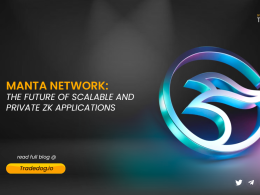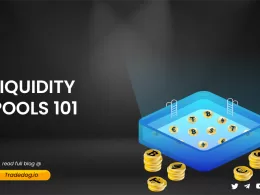Quick Links
The world of blockchain technology is often associated with innovation, decentralization, and the promise of a new financial paradigm. But behind the buzzwords and futuristic visions lies a fundamental question: Which blockchains are actually making money? As the industry matures, it’s not just about who can create the most buzz or attract the most developers—it’s about which networks can generate sustainable revenue and turn a profit in the long run.
In the highly competitive and volatile landscape of blockchain, profitability is a key indicator of a network’s viability. With countless Layer 1 (L1) and Layer 2 (L2) networks vying for dominance, understanding which ones are financially successful offers valuable insights into the health and sustainability of these ecosystems. As the dust settles from the initial hype, only those networks with robust economic models will stand the test of time.
In this blog, we’ll take a closer look at the most profitable blockchains in both the Layer 1 and Layer 2 sectors, exploring how they generate revenue, manage expenses, and what sets them apart in the race for financial sustainability. Whether you’re an investor, developer, or blockchain enthusiast, understanding these dynamics is crucial as the industry continues to evolve.
Layer 1 Blockchain’s
(Source – Token Terminal)
Ethereum
Ethereum, often regarded as the backbone of DeFi, leads the pack in terms of revenue generation. Over the past year, Ethereum earned ~ $2.16 Bn in revenue, a staggering figure that reflects its dominant position in the blockchain ecosystem. However, this revenue has not translated into profitability, as it has recorded a net loss of ~ $15 Mn over the same period.
The reason for this loss lies in the issuance of new tokens, which has outpaced the network’s revenue. Additionally, the migration of transaction activity to Layer 2 solutions has reduced the fees paid directly to Ethereum, further impacting its earnings. Despite maintaining a high transaction volume and network activity, Ethereum’s profitability has been undercut by these factors, making it a leading but currently unprofitable blockchain.
Tron
Tron may not grab headlines as frequently as Ethereum, but its financial performance is impressive. Over the past year, Tron generated $1.46 Bn in revenue, largely driven by its extensive stablecoin activity. Tron’s stablecoin usage is particularly prevalent in developing economies like Argentina, Turkey, and various African nations, where high inflation has increased the demand for stable digital assets.
Unlike Ethereum, Tron has successfully translated its revenue into profit, recording earnings of ~ $271 Mn over the last 365 days. This makes Tron the most profitable blockchain currently in operation. Tron’s ability to maintain profitability, even as it continues to grow, highlights the strength of its network and its strategic focus on stablecoin transactions.
Solana
Solana is another blockchain that has made a name for itself, particularly as a hub for memecoins and upcoming innovations in the field of Web3. Over the past year, Solana generated $170.6 Mn in revenue, thanks to its growing user base and technological upgrades aimed at reducing congestion and enhancing network performance.
However, Solana’s revenue has not been enough to cover its expenses. The blockchain has registered a net loss of ~ $2.53 Bn over the last 1 year. This loss is primarily due to the high cost of token issuance to stakers and other operational expenses. As a result, despite its strong revenue generation, Solana is deeply unprofitable at this stage.
Avalanche
Avalanche, known for its innovative subnet scaling solution and focus on gaming, generated $69.15 Mn in revenue over the past year. The upcoming ACP-77 upgrade is expected to improve the experience of deploying and managing subnets, potentially increasing the network’s revenue in the future. Despite these promising developments, Avalanche is currently operating at a significant loss. Over the past year, the network has registered a net loss of ~ $860.6 Mn.
Layer 2 Blockchain’s
(Source – Token Terminal)
Base
Base, an L2 blockchain launched by Coinbase using the OP Stack, has made significant strides despite being less than a year old. Since its inception, Base has generated ~ $65.3 Mn in revenue, retaining ~ 63% of this as profit, which amounts to ~ $42 Mn in earnings.
Base’s success can be attributed to its cost-effective measures, such as implementing blobs via EIP-4844, which dramatically reduced operational costs. Additionally, the absence of a native token has allowed Base to avoid distribution-related expenses, further enhancing its profitability. Base’s early success highlights its potential as a leading L2 solution in the blockchain ecosystem.
Arbitrum
Arbitrum, the largest L2 by TVL ($17.2 Bn), generated ~ $60.5 Mn in revenue over the past year. As a hub for DeFi, Arbitrum hosts leading protocols like GMX and Pendle, and its SDK serves as the foundation for emerging L3s.
Arbitrum’s profitability is also noteworthy. The network has achieved ~ $21.8 Mn in earnings over the past year, with a particularly strong performance in Q2, when its expenses dropped significantly. This has allowed Arbitrum to maintain a stable financial position despite the competitive landscape in the L2 space.
Zk Sync Era
zkSync Era, a leading ZK-based L2, generated ~ $48.7 Mn in revenue over the past year. Following its airdrop in June 2023, zkSync saw a significant influx of TVL, although this has gradually declined as users sold their tokens.
Despite these challenges, zkSync has remained profitable, netting ~ $15.3 Mn in earnings over the past year. However, with a P/F ratio of 1,006.4x, zkSync’s profitability is closely tied to its ability to sustain and grow its user base and transaction volume.
Optimism
Optimism, the center of the Superchain, generated ~ $43.06 Mn in revenue over the past year. In Q2 2024, the network saw record activity, with daily active addresses and transactions rising significantly.
Despite these positive trends, Optimism recorded a net loss of ~ $239 Mn over the past year. This loss was driven by retroactive airdrops, incentive programs, and high operational costs. While the network is growing, it still faces significant challenges in achieving profitability.
Conclusion
Profitability in the blockchain space varies significantly between networks. While some, like Tron and Base, have successfully turned their revenue into profit, others, such as Ethereum and Solana, face substantial losses despite generating high revenue. As the blockchain ecosystem continues to evolve, understanding these financial dynamics will be crucial for investors and developers alike.
In the end, while profitability is an important metric, it’s not the only one that determines the success or potential of a blockchain network. As with any emerging technology, narratives and future potential often play a significant role in shaping the trajectory of these networks.









